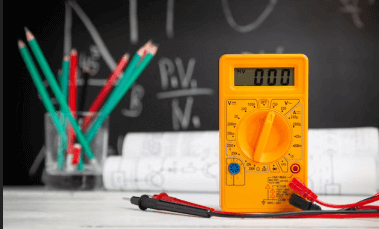Question
a.
less than 90°
b.
less than 45°
c.
180°
d.
30°
Posted under Electronics and Communication Engineering
Interact with the Community - Share Your Thoughts
Uncertain About the Answer? Seek Clarification Here.
Understand the Explanation? Include it Here.
Q. The maximum phase difference between the applied voltage and current in a RLC series current with finite values of R, L, C, and f can be
Similar Questions
Explore Relevant Multiple Choice Questions (MCQs)
Q. A phasor is
View solution
Q. The phase difference (jω - p₁ )
View solution
Q. Which of the following statements is incorrect?
View solution
Q. If the peak value of output of a half wave rectifier is 100 V, the rms value is
View solution
Q. For a flexible cable, most suitable insulation is
View solution
Q. When analysing two port networks in cascade, it is more convenient to use
View solution
Q. For a transfer function H(s) = P(s)/Q(s), where P(s) and Q(s) are polynomials in s
View solution
Q. The inductance of a coil can be increased by
View solution
Q. The dual of quantity charge is
View solution
Q. Consider the following statement :
If a network has an impedance of (1 - j) as a specific frequency, the circuit would consist of series
1. R and C
2. R and L
3. R, L and C
Which of the statement are correct?
View solution
Q. A dc voltage source is connected across a series RLC circuit, Under steady state conditions, the applied dc voltage drops entirely across the
View solution
Q. The resonance frequency is
View solution
Q. Maximum power transfer theorem is applicable to circuits with one source only.
View solution
Q. Two coupled coils have self inductance L1 and L2. The coefficients of coupling is k. The mutual inductance is
View solution
Q. Laplace transform method enables us to find the response in
View solution
Q. The minimum permissible size of aluminium cable for lighting circuit is
View solution
Q. Assertion (A): In a parallel circuit having two branches, each branch current may be more than source current.
Reason (R): Calculations in ac circuits use rules of complex algebra.
View solution
Q. Current density J, conductivity σ and electric field E in a conductor are related as
View solution
Q. If a driving point function N(s) = p(s)/q(s), then
View solution
Q. A function f(t) = k e^(at) is __________ for (a > 0).
View solution
Recommended Subjects
Are you eager to expand your knowledge beyond Electronics and Communication Engineering? We've handpicked a range of related categories that you might find intriguing.
Click on the categories below to discover a wealth of MCQs and enrich your understanding of various subjects. Happy exploring!








